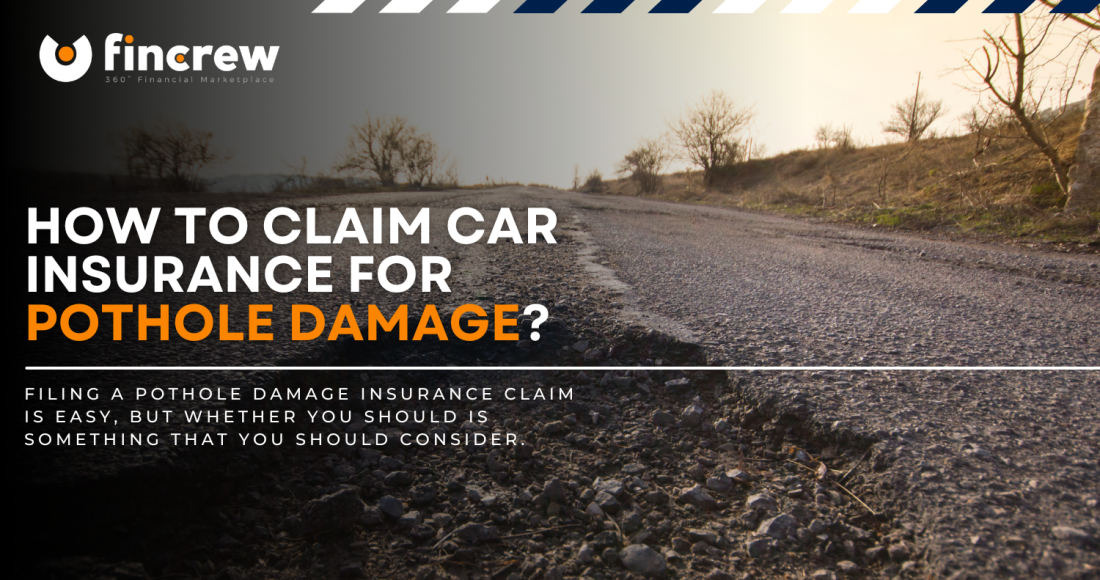If you’re driving in good visibility during the day, avoiding potholes is relatively simple – if you’re paying attention. But in nighttime or bad weather, a sickening “Clunk! Crunch!” generally suggests your vehicle’s been damaged. Generally, going over a pothole will cause only a grumpy mood and no long-term damage to your vehicle. If the pothole is particularly deep or you’re going too fast, however, you might also leave behind some dents and scratches. Pothole damage to your vehicle can quickly worsen. Tires, hubcaps, struts, and alignment can soon accumulate, leaving some motorists with expensive repairs. Filing a pothole damage claim is easy, but whether you should is something that you should consider.

How Pothole Claims Work
A pothole claim on your insurance policy is a single-car accident that is classified as an at-fault accident. A pothole is considered a collision. If you file an at-fault claim, your collision deductible will apply, and your rates may increase at renewal time. Occasionally, the damage sustained is less than your deductible, making filing a claim irrelevant.
What You Can Do Instead of Filing a Claim With Your Insurer?
Instead of filling a claim with your insurance company for pothole damage, you can also file a claim with the government. First of all, check if the road is a city or a state road. Depending on where you reside, the local government may be able to reimburse you. Of course, it can be a long and tedious process, so be ready to pay the cost upfront. Suppose your car only suffered a couple of minor dings and scratches. In that case, you are probably better off skipping any official claim process altogether — it’s just not worth the effort and energy. The easiest way to file claims with the government is to follow the authority’s claims process – usually, this involves just filling out a form. Not all citations allow this, and if they do, it doesn’t always work. But it’s always worth a try.
Gather Evidence
Whether you are filing a pothole claim with your insurance company or the government, you need to gather evidence. If a tape measure is handy and safe (do not try it on a motorway), look at the pothole’s depth and write it down. As long as it’s 40mm deep or more prolonged (roughly the height of two 20p coins), then bingo – it’s worth searching. If it is less, it is still worth fixing, but you might not recoup the total cost of repairs. Measure the width as well. Ensure you take pictures right away or as fast as possible if it’s safe to do so. If you don’t have a camera, you can always come back. Things to photograph are:
- Close-ups of the pothole. Photos showing the width and depth of the pothole should be sufficient.
- The pothole’s position is on the road. Photograph it from different angles, showing which lane they are in. Make sure the pothole is visible in these pictures.
- Road signs. The road signs along the immediate stretch of the street and nearby landmarks such as schools and prominent buildings will help you pinpoint the location.
- Your car. It will be necessary to show the damage, so take several clear pictures of anything that’s broken, severed, dented, or scratched.
Prevent Pothole Damage Before It Occurs
In any case, there are several things you can do well before a situation happens that can help you avoid any unfortunate incident. It would help if you continually keep your eyes on the road when driving. It is not just about where you’re going, but about what’s on the ground as well. When your neighborhood has many potholes, it’s often possible to get the problem fixed with just a few calls to local officials. That’s how you’ll save yourself – and hundreds of others – headaches and hassles from pothole damage.





